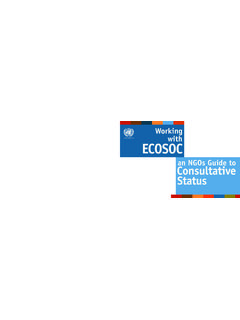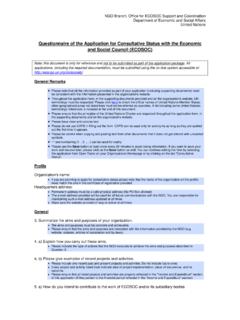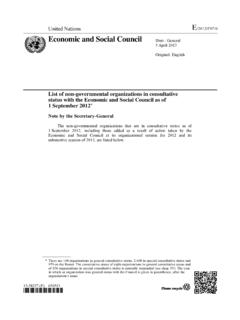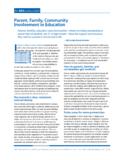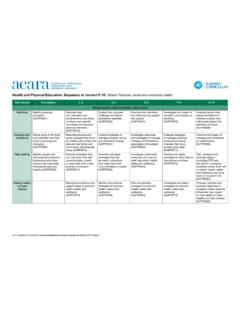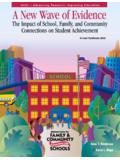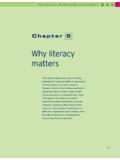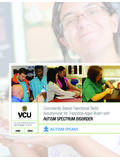Transcription of Successful Models of Non-Governmental Organizations in ...
1 Successful Models of Non-Governmental Organizations in Consultative Status: Best Practices in education By Rosetta Avolio-Toly December 2010 *Rosetta Avolio-Toly is an American currently finishing her undergraduate degree in international relations at Occidental College in Los Angeles, California. The research was conducted through her internship at the United Nations Headquarters DESA/NGO Branch. Avolio-Toly can be reached at for any questions, comments or suggestions regarding this paper. DISCLAIMER This research was been conducted by Rosetta Avolio-Toly, an American currently working towards completing her undergraduate degree in international relations at Occidental College in Los Angeles, California. The research was conducted in the context of an internship with the NGO branch of the Department of Economic and Social Affairs.
2 The opinions and ideas expressed in the current research do not reflect that of the United Nations or any of its subsidiary bodies. They are the sole opinion of Rosetta Avolio-Toly. Any questions or suggestions should therefore be discussed or addressed to the author. Rosetta Avolio-Toly December 2010 Introduction: The overall focus of the Secretary General s 2011 Annual Ministerial Review (AMR), is Implementing the internationally agreed goals and commitments in regard to education . The Economic and Social Council of the United Nations (ECOSOC) will focus their work throughout 2011 on education ; discussing the state of education throughout the world, and how the ECOSOC can help work towards achieving increased the overall quantity and quality of education throughout the world.
3 MDG 2: achieving universal primary education . In evaluating how the NGO branch can best support this endeavor, this paper provides a review of my research on current education programs being implemented by NGOs in consultative status. I tried to provide a diverse group of NGOs from different areas of the world, who implement education programs on various themes throughout the developing world. I also worked to incorporate both local and international NGO s. There are more Western based NGOs showcased, as they were the easiest to contact and had the most information available on their website. Keeping in mind that is a sampling of various projects, not a full review, this paper outlines and discusses current Models and trends in education programming by NGOs in consultative status, while also highlighting gaps and areas for improvement.
4 I use specific best practices from NGOs to showcase the Models and trends I observed in my research. There are many NGOs doing innovative Successful programming in the field of education , and I highlight just a few of these success stories. While many NGOs are making great strides in working to ensure equitable education for all, I observed some gaps and limitations when conducting my research. There are still groups of students and subjects that are receiving less attention from NGOs. Also there are limitations in continuing these projects or implementing them on a larger scale. All of these concerns are outlined later in the paper. Overall, NGO s are essential in achieving universal education as they work in the field implementing programs, working with UN bodies and governments, as well as fellow NGO s.
5 They are engaging in many new and unique programs tailored to their specific circumstances. Models When researching education projects, I noticed a few Models which Successful NGOs were using to implement Successful projects. These Models are strategies which NGOs are using to plan and implement their projects with a large positive impact. The Models I observed were: a specific focus on incorporating the community in planning and implementing projects, forming partnerships with local civil society and government, adopting innovative approaches to providing services, and building up the capacity of the community and local institutions. Other NGOs should look to incorporate these Models when planning and implementing their own programming. These Models are not limited to education , but can be utilized in every type of program sector.
6 The best projects I highlight later in the paper all exhibited at least two of these Models which contributed to their success. Community Focus and Ownership: Successful projects are designed around the specific needs of the community they are being implemented in. This requires doing assessments and talking with the community when planning a program. Each community faces different obstacles, and designing programs around these unique needs makes programs more effective and efficient. This specialized design also attracts greater involvement and support from the community. Involving the community in the planning and decision making of programs strengthens the relationship between NGO s, the communities and projects. Community members feel more ownership and responsibility for the projects, and are more likely to be invested in a project s success and effectiveness.
7 Community involvement can also help with funding and staffing of programs, and increases the likelihood of a Successful handover from NGOs to the community. Partnerships: Another model of Successful NGOs is their creation of partnerships with other civil society Organizations , international institutions and/or the government. International NGOs are partnering with local civil society to effectively plan and implement programs. NGO s at every level are partnering with one another to share information, best practices and funding mechanisms in order to develop the best programs possible. NGOs are also working with the government to design and implement programs, often operating their programs in alignment with the education goals and priorities outlined by the government.
8 Partnerships, whether with civil society or the government, help spread the planning, managing, and funding burdens of programming. Overall, partnerships make programs more effective and efficient. Innovative Approaches to Providing Services: Successful projects go beyond the traditional Models of delivering aid and services. Many effective programs are conducted outside of formal institutions or conventional formats. This allows NGOs to reach a broader range of participants, and have a larger impact. Successful programs provide services in interesting, interactive, or unique ways. Often this means moving away form preconceived ideas had prior to working with a community, and for NGOs to be flexible and wiling to change or supplement their programming when necessary. One large area of recent innovation is the integration of technology for more effective and engaging programming.
9 Capacity Building: In order to run effective projects, NGO s must help build the infrastructure and capacity of governments, institutions and communities to support these projects. Capacity building can be done in many forms; including institutional, physical or intellectual depending on the needs of the community. Sometimes this means increasing physical infrastructure building roads, buildings, telecommunication, etc that will ease the implementation of projects. Other projects focus on building intellectual capacity; passing on new knowledge, technology and skills to community members. Still others focus on building the institutional capacity of governments, institutions and other civil society groups to take on and administer the services NGOs are providing. Countries must develop their infrastructure in order to provide the services NGOs are currently providing to their citizens in the future.
10 Successful NGOs focus on building capacity in order to implement programs efficiently, and enhance communities ability to provide services by themselves in the future. Projects To showcase these Models I picked a variety of NGOs implementing best practices in education . There are many NGOs doing great work, and the following projects are just a sample of these. The largest focus areas I found were programs focusing on: building education infrastructure, female education , education of at-risk or underrepresented children, community involvement, non-formal education and technology. Many of the programs cross cutter through these categories as well. Building education Infrastructure Many programs current programs focus on building up the education infrastructure of communities.

